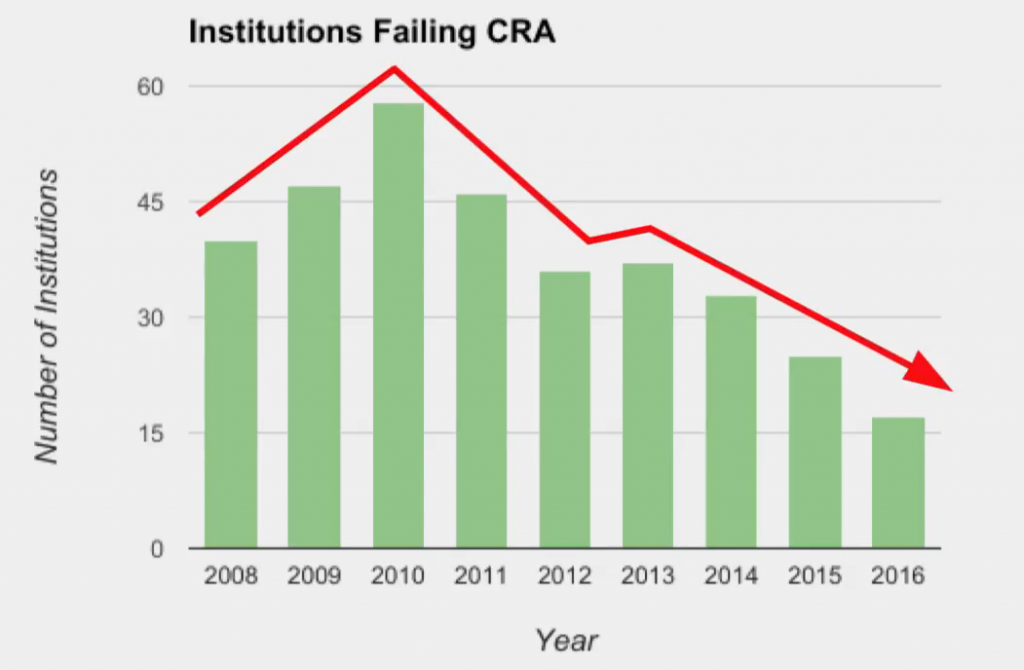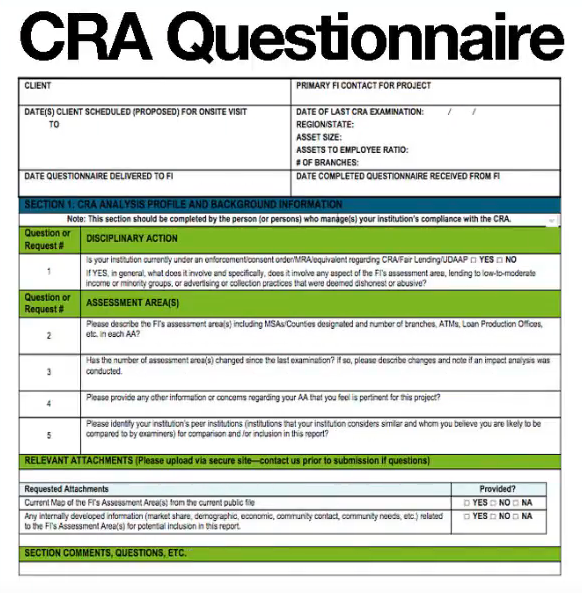 Trying to build a house with just a hammer and a few nails isn’t going to work out nearly as well as having access to the whole arsenal of homebuilding tools and machinery. In a similar fashion, preparing for a CRA examination will work out much better if you utilize more of the tools that are available.
Trying to build a house with just a hammer and a few nails isn’t going to work out nearly as well as having access to the whole arsenal of homebuilding tools and machinery. In a similar fashion, preparing for a CRA examination will work out much better if you utilize more of the tools that are available.
While the decline in enforcement activities for Community Reinvestment Act deficiencies may mean that it is no longer one of your top worries, you likely still devote a significant chunk of time and resources to CRA compliance. In recent years, the CRA has taken a backseat to regulations such as BSA/AML, TRID, UDAAP and Fair Lending. This is true with both institutions and regulators as you can see in this decreasing trend line for less than satisfactory CRA ratings.

Even though the number institutions failing CRA has dropped, there remains the much-anticipated CRA Examination. Every examination, even those where most institutions are likely to “pass,” still requires effort. Here are a few tools that can change the game when it comes to CRA exams.
Perhaps one of the most underutilized, yet important tools, is the US Census Bureau’s website. When combined with a few other handy tools, this tool can provide some significant cost savings.
Census.gov contains a plethora of information. Its Maps and Data pages are a CRA Officer’s dream. One of the more recently enhanced tools is the Census Geocoder. This is a look-up tool that converts an address to an approximate coordinate in terms of latitude and longitude, then returns information about the address and the census geography the address is within.
The tool allows you to look-up a single address, and more recently, it allows you to geocode a batch of up to 1,000 addresses at a time. You can also find the census geographic entities for an address using the “Find Geographies Using…” option that provides additional data. Simply stated, this tool is a game-changer for institutions that have been purchasing geocoding software. We should know; our history for CRA projects dates back to 1991, when we spent literally tens of thousands on software systems designed to do what is now a free service. Now the US Census provides not only strong geocoding, but enhanced mapping capacity aimed at providing key information on statistical factors associated with an organization.
 Just being able to geocode isn’t the entire CRA process, but it has been one of the most complex. Producing a meaningful report still requires a good team that has the capacity to provide peer performance and demographic comparators. We typically start CRA projects with a form, like the one on the right, which works best for small and intermediate small banks. This form is designed as a shell that can take the information of geocoding data results to produce a comparative analytical report that we call SAGE—Strategic Assessment Gap Evaluation.
Just being able to geocode isn’t the entire CRA process, but it has been one of the most complex. Producing a meaningful report still requires a good team that has the capacity to provide peer performance and demographic comparators. We typically start CRA projects with a form, like the one on the right, which works best for small and intermediate small banks. This form is designed as a shell that can take the information of geocoding data results to produce a comparative analytical report that we call SAGE—Strategic Assessment Gap Evaluation.
A SAGE report is both insightful and provides direction. It gives organizations the opportunity to provide meaningful context to past performance. Using such a tool prior to an examination gives an institution insightful knowledge as to how it might perform in an actual examination to minimize the chance of examination surprise. Utilized as part of an ongoing effort, the tool also provides a meaningful trending document.
One of the primary positive side effects of the greater access to data is that the cost for producing such a report has dropped significantly. Using available technology to capture key data, the cost of today’s SAGE is a fraction of retaining and training dedicated CRA in-house personnel. Resources that were once dedicated to the technical demands of CRA can now be reallocated to the complex areas such as community development analysis and documentation, where we now spend a good portion of our time and which tends to yield more positive results in a CRA examination.
Most likely, when it comes to CRA, you’re one of the 98% Satisfactory or Outstanding organizations, and you’ll probably stay that way. Yet, reducing costs while providing enhanced reports could make you not only Satisfactory, but more efficient and profitable as well.




